Powder Brown Tang (Acanthurus japonicus)
Quick Stats:
- Care Level: Moderate
- Temperament: Semi-aggressive
- Diet: Herbivore
- Reef Safe: Yes
- Minimum Tank Size: 75 gallons
- Max Size: 8 inches
- Water Parameters: pH 8.1-8.4, Salinity 1.020-1.025, Temperature 72-78°F
Comprehensive Guide: Powder Brown Tang (Acanthurus japonicus)
The Powder Brown Tang, also known as Acanthurus japonicus, is a popular species in saltwater aquariums. This comprehensive guide will provide you with all the information you need to know about this fish.
Habitat
The Powder Brown Tang is native to the Western Pacific Ocean, specifically the waters around Japan. It inhabits coral reefs and lagoons, which can be found in small groups or alone.
Reef Safe
The Powder Brown Tang is considered reef safe, meaning it can be kept in a reef aquarium without causing harm to corals or other invertebrates. However, caution should still be exercised when introducing it to a reef tank, as individual fish may exhibit different behaviors.
Size
The Powder Brown Tang can grow up to 8 inches long, making it a medium-sized fish for a saltwater aquarium.
Temperament
This species is known to be semi-aggressive, especially towards other tangs or similar-shaped fish. It may display territorial behavior and should be provided ample swimming space to reduce aggression.
Sexual Dimorphism
There are no distinguishable physical differences between males and females of the Powder Brown Tang species.
Lifespan
The average lifespan of a Powder Brown Tang in captivity is around 5 to 10 years, depending on the quality of care provided.
Diet in Aquariums
The Powder Brown Tang is a herbivorous fish that primarily feeds on algae and other plant matter. An aquarium’s diet should consist of marine-based seaweed, algae sheets, and high-quality commercial herbivore pellets.
Aquascaping Recommendations
When designing the aquascape for your Powder Brown Tang, providing plenty of open swimming space and areas with live rock for hiding and grazing is important. The addition of macroalgae or live plants can also provide additional grazing opportunities.
Captive Bred Availability
The Powder Brown Tang is occasionally available as captive-bred specimens, although they are more commonly found as wild-caught fish. Captive-bred individuals are generally hardier and better suited to aquarium life.
Compatibility with Other Fish, Invertebrates, or Corals
The Powder Brown Tang can be compatible with other fish, invertebrates, and corals. However, caution should be exercised when selecting tankmates to ensure they can coexist peacefully. Here are five specific tankmates that are good choices:
- 1. Clownfish – These fish are known for their peaceful nature and can form a symbiotic relationship with anemones.
- 2. Royal Gramma – This small, colorful fish is compatible with the Powder Brown Tang and adds visual interest to the tank.
- 3. Cleaner Shrimp – These shrimp can help keep the tank clean and are generally well-tolerated by the Powder Brown Tang.
- 4. Mushroom Corals – These corals are hardy and can provide additional hiding spots for the Powder Brown Tang.
- 5. Firefish – This slender fish is peaceful and can add movement to the aquarium.
Other Common Names
The Powder Brown Tang is also commonly known as the White-faced Surgeonfish or the White-nosed Tang.
Why Buy from Reefs4Less.com
Reefs4Less.com is a reputable online retailer specializing in saltwater aquarium supplies. They offer a wide selection of fish, corals, and invertebrates, including the Powder Brown Tang. With their competitive prices and excellent customer service, Reefs4Less.com is a trusted source for all your aquarium needs.
Popular Questions and Answers
Q: What is the ideal tank size for a Powder Brown Tang?
A: The minimum tank size recommended for a Powder Brown Tang is 75 gallons. Providing ample swimming space is important for the well-being of this active fish.
Q: Can the Powder Brown Tang be kept in a reef tank?
A: Yes, the Powder Brown Tang is considered reef-safe and can be kept in a reef tank without causing harm to corals or other invertebrates.
Q: How often should I feed my Powder Brown Tang?
A: It is recommended to feed your Powder Brown Tang multiple times a day, offering a varied diet that includes marine-based seaweed, algae sheets, and herbivore pellets.
Q: Can the Powder Brown Tang be kept with other tangs?
A: Keeping multiple tangs of the same or similar species together is generally not recommended, as they may exhibit territorial behavior and aggression towards each other.
Q: How can I reduce aggression in my Powder Brown Tang?
A: Providing ample swimming space, hiding spots, and a well-balanced diet can help reduce aggression in Powder Brown Tangs. It is also essential to select compatible tankmates and monitor their interactions.
| Size | 3.25 – 4.25 inches |
|---|

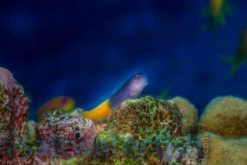 Bicolor Blenny - South Asia, Size 1.25 - 2.25 inches
Bicolor Blenny - South Asia, Size 1.25 - 2.25 inches 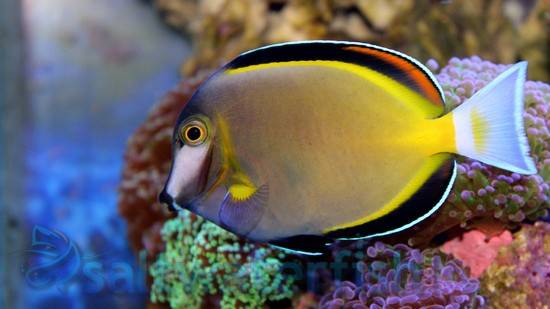
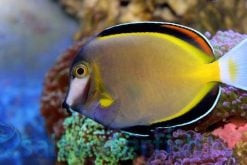
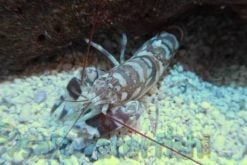
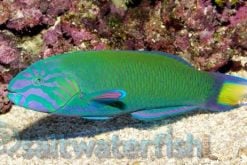
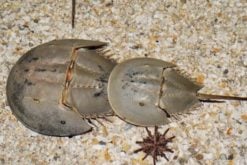
Reviews
There are no reviews yet.